THERE IS A GREAT NEED for a major national park in central Chile, a region of extraordinary natural beauty and diversity. It is especially needed to save a very endangered population of huemul deer, estimated at fewer than 80 individuals. This small population is the last one surviving north of Patagonia (see map). Land development, urbanization, industrial projects, livestock presence, and roaming dogs continue to degrade, fragment, and destroy its habitat.
Fifty years ago, I began working with colleagues in Chile to protect that nation’s emblematic animal. I’m still at it. As a young guy in the 1970s, I was blessed with an extraordinary opportunity to pioneer field research on the species. My job was to locate surviving groups, investigate their habitat preferences, and figure out why they were disappearing. Later, I organized field teams to expand surveys for huemuls in both central Chile and Patagonia.
After a 6-year hiatus, I’ll return to Chile this December/January to meet with the regional governor, participate in a conference on protected areas, and explore measures that could be taken to establish a large national park. There’s some recent encouraging news on this front. Of course, I’ll also get back to a few of my old field sites. I’d like to ask huemuls one more question about their intriguing lives.
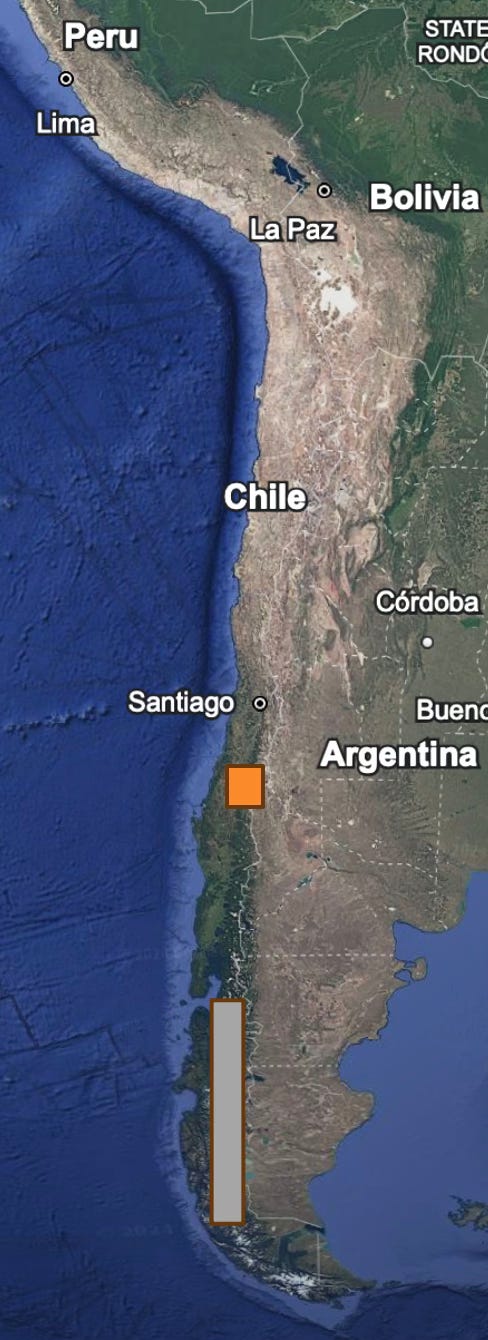
❖
The huemul means a lot to me, as a real creature and symbolically. When you study a wild animal closely, you can quickly develop a personal attachment. It just takes a beautiful encounter or two.
By January 26, 1975, I had already spent weeks searching for the huemul in the Nevados de Chillán mountains of central Chile. I found no definitive tracks or other signs of the animal, and that was super disappointing. This was likely my last field day in the region, as it seemed futile to continue searching.
On that blazing summer afternoon, while descending a mountain and about ready to call it quits, I noticed an inviting patch of old-growth forest less than a mile away, situated just below a ridge to the north of me. So what the heck, I thought, why not go over there to cool off and enjoy that beautiful place before heading back?
I rambled down and across several nasty rock fields, through some horrendously dense brush, and, about an hour later, abruptly landed in a tall lenga forest carpeted with bedazzling orange-flowered Alstroemeria.
My brain was in high perceptual mode. About 50 feet away, a dark brown figure stood watching me, frozen in position. A long second passed before I realized that, in this dream-like place, right there — the darkest object on the forest floor — was an actual living huemul!
There was clearly a spiritual dimension to this event, foretold by an experience three years earlier, at a time when I found myself adrift in a river of thought on what’s next in life.
It occurred at the crack of dawn near the bottom of Arizona’s Grand Canyon. While in a half sleep, this feeling of a living presence overcame me. A deer, just a few feet away, learned toward me as I opened my eyes and reflexively gestured toward her. How wonderful and calming, I thought, while falling back to sleep.
I didn’t recall that experience until the time I was heading to Chile, a country I knew virtually nothing about, in search of an animal known to science as Hippocamelus bisulcus. It was 1974. Hardly a year had passed since the nation’s bloody military coup. A deer biologist in Colorado who had planned to go dropped out, apparently hearing news of ongoing violence. To make a long story short, I wound up going instead. I was a free-ranging graduate student in wildlife biology at the time, with, of all things, a masters degree in public health. Life offered a rare opportunity to study a large mammal that had not been studied before, under unusual circumstances.
.❖


Before saying hasta la leugo, here are few old-time images you might enjoy.
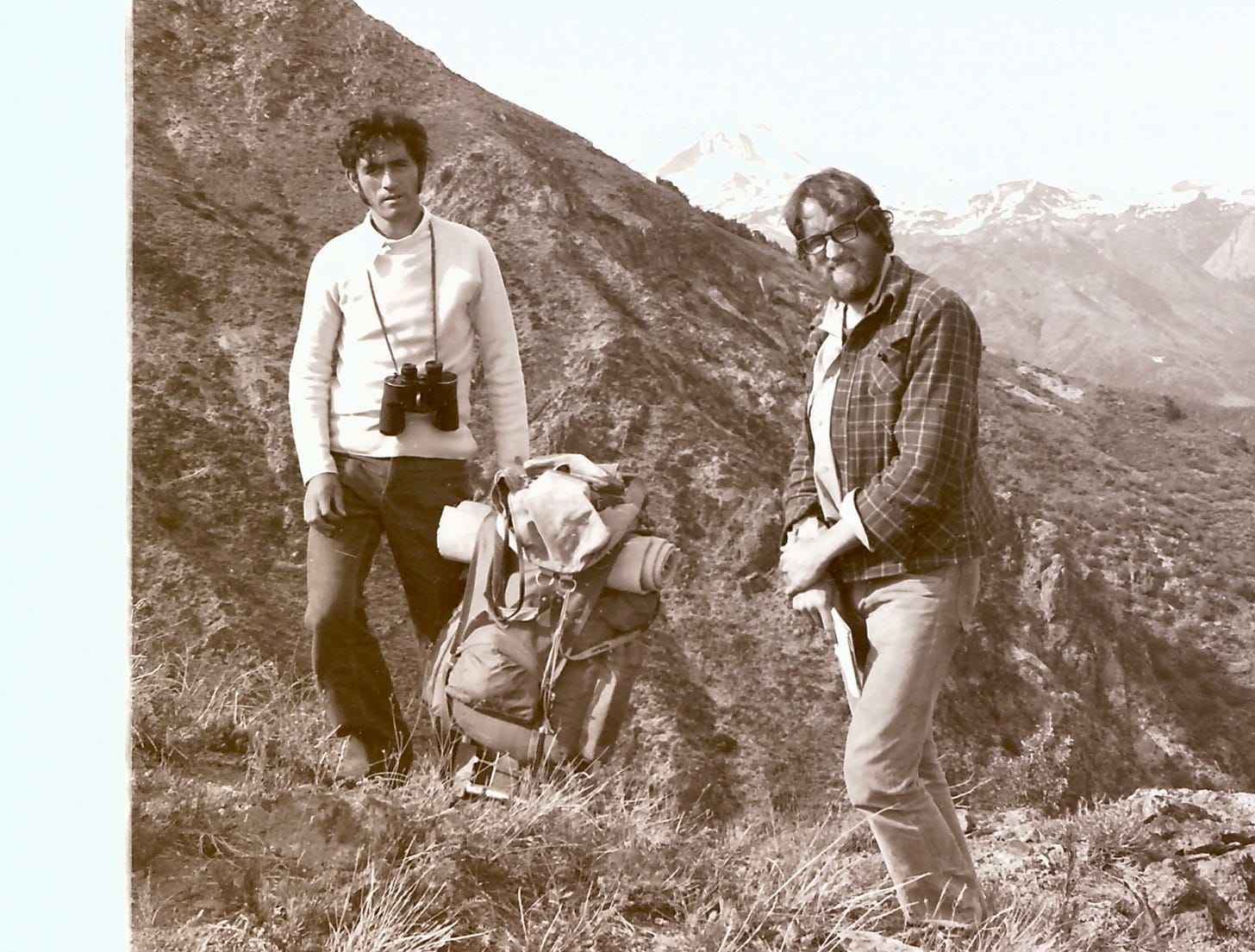

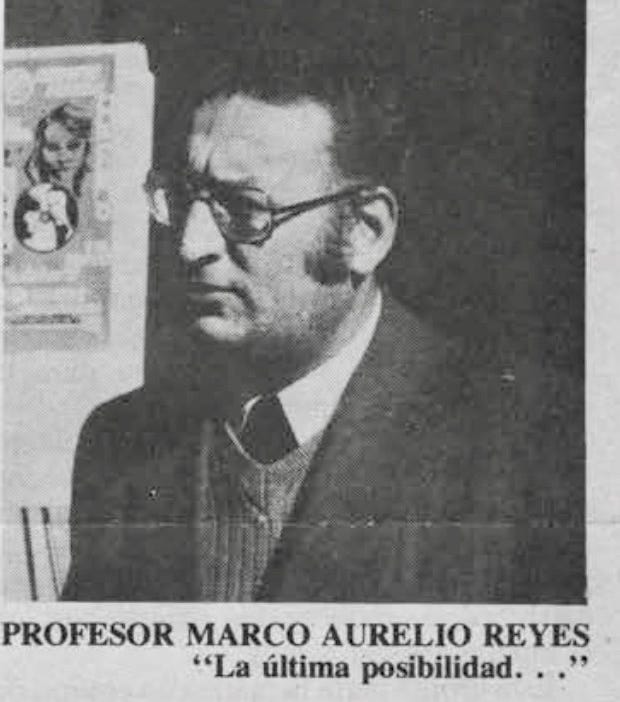
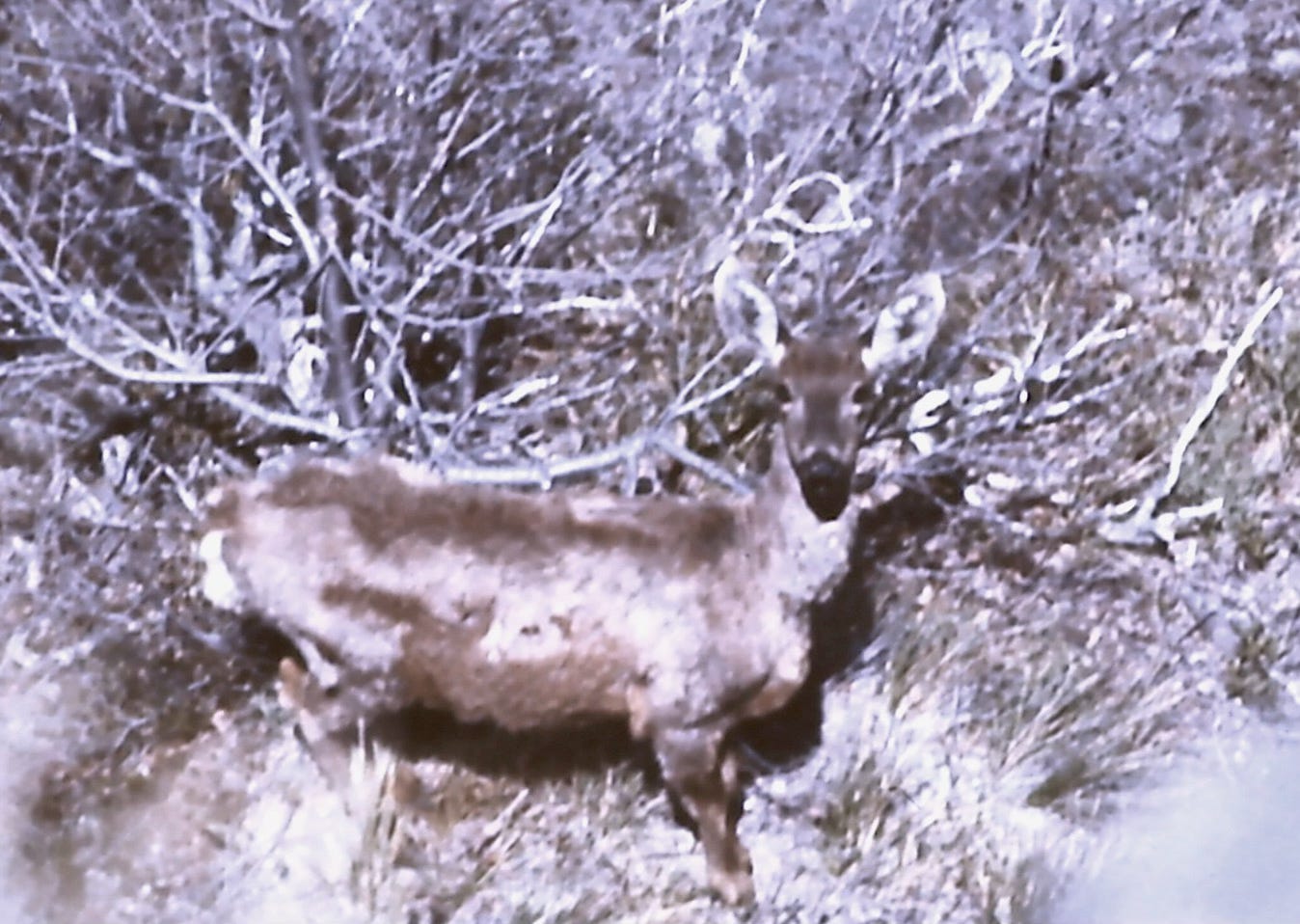

❖
If you’d like to support my work, please consider upgrading your free subscription to paid (see button below). Or, you can donate to my non-profit organization, Life Net Nature. It sponsors Scale Down and currently undertakes wildlife research and conservation in Ecuador and Kenya.
.❖
Post Script: I’ve discovered some really good writers and thinkers here on Substack that also address Scale Down themes. Among my favorites are Elisabeth Robson and Kollibri Terre Sonnenblume. Check them out!
.❖
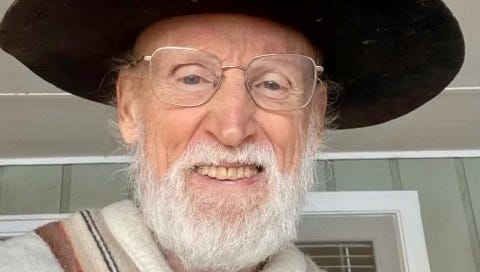


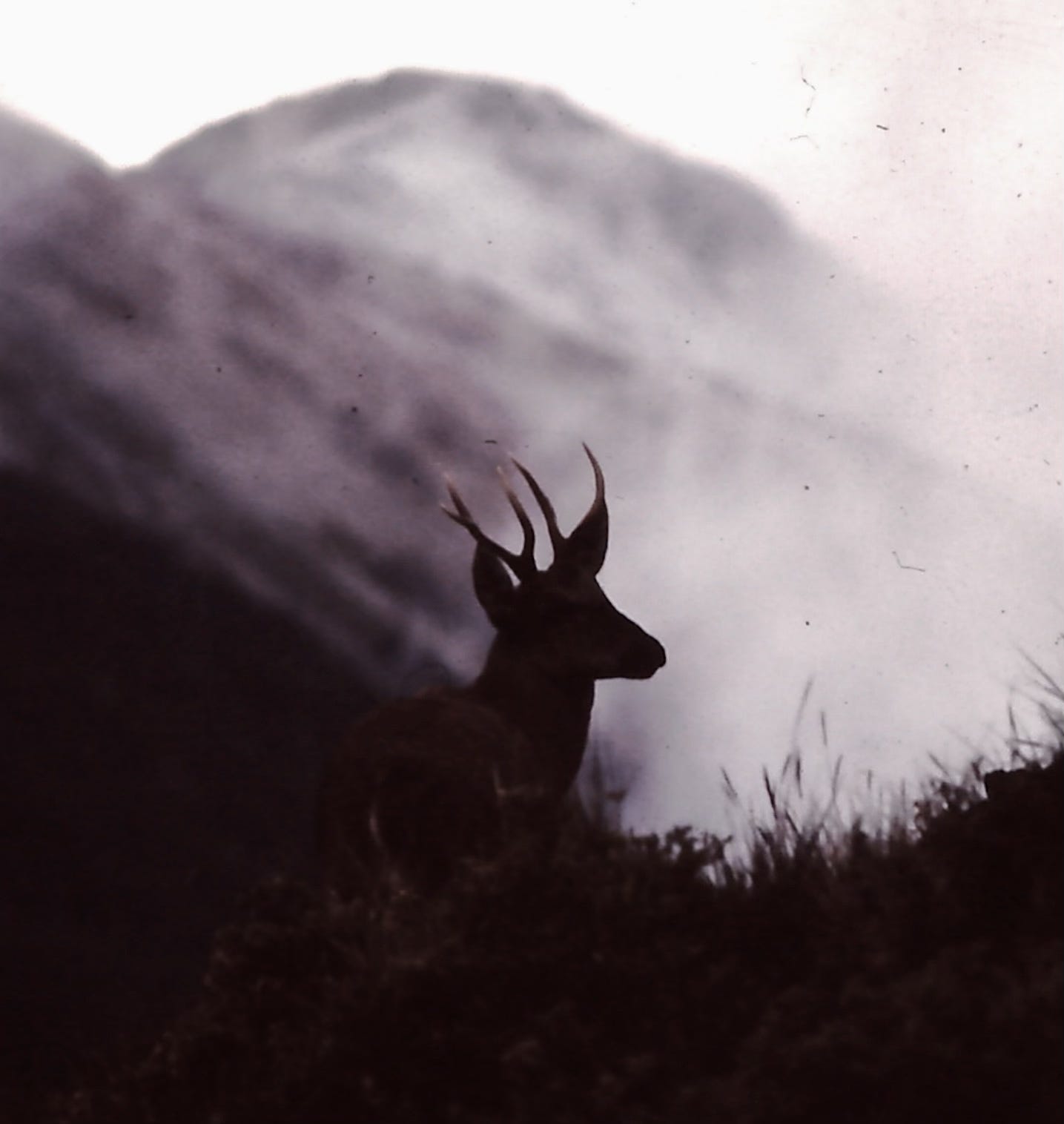

I'm happy to report that my trip to Chile was amazing, especially seeing the enthusiasm expressed by many young people for the protection and conservation of the huemul and other wildlife. I witnessed great changes in Chile since I first started working there a half century ago, with feelings of both trepidation and hope. The most difficult part, perhaps, is the reluctance of political leaders to be conservation leaders, a problem, of course, not unique to Chile. Here are links to a newspaper article and interview related to my efforts to help save the Andean huemul. Thank you again for subscribing to Scale Down on Substack.
Me alegra informar que mi viaje a Chile fue increíble, especialmente viendo el entusiasmo expresado por muchos jóvenes por la protección y conservación del huemul y otro vida silvestre. Fui testigo de grandes cambios en Chile desde que comencé a trabajar allí hace medio siglo, con sentimientos tanto de temor como de esperanza. La parte más difícil, tal vez, es la renuencia de los líderes políticos a ser líderes conservacionistas, un problema, por supuesto, no exclusivo de Chile. Aquí hay links a un artículo periodístico y una entrevista relacionados con mis esfuerzos para ayudar a salvar el huemul andino. Muchas gracias nuevamente por suscribirse a Scale Down en Substack.
https://ladiscusion.cl/advierten-drastica-caida-en-poblacion-de-huemules-y-la-necesidad-de-un-parque-nacional/
https://ladiscusion.cl/biologo-norteamericano-expondra-sobre-problematicas-y-estrategias-en-la-conservacion-del-huemul/?fbclid=IwY2xjawIQsLBleHRuA2FlbQIxMQABHbKsRfd6h3ABi7gDKJQsbnyxDI-I_MaoE4h2ykcuOWZCjgmoZ088XdxxFA_aem_o4jdNsbmPfQNltOrDv8r9A
I’ve just found your work and am enjoying my trip through your archives. Always good to find more biocentric voices. I’m grateful for your work, and wish you great success in Chile!